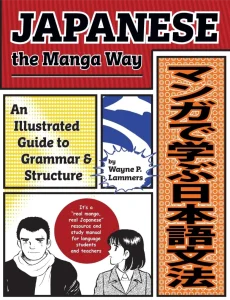"Presenting all spoken Japanese as a variation of three basic sentence types, Japanese the Manga Way shows how to build complex constructions step by step. Every grammar point is illustrated by an actual manga published in Japan to show how the language is used in real life, an approach that is entertaining and memorable. As an introduction, as a jump-start for struggling students, or (with its index) as a reference and review for veterans, Japanese the Manga Way is perfect for all learners at all levels."
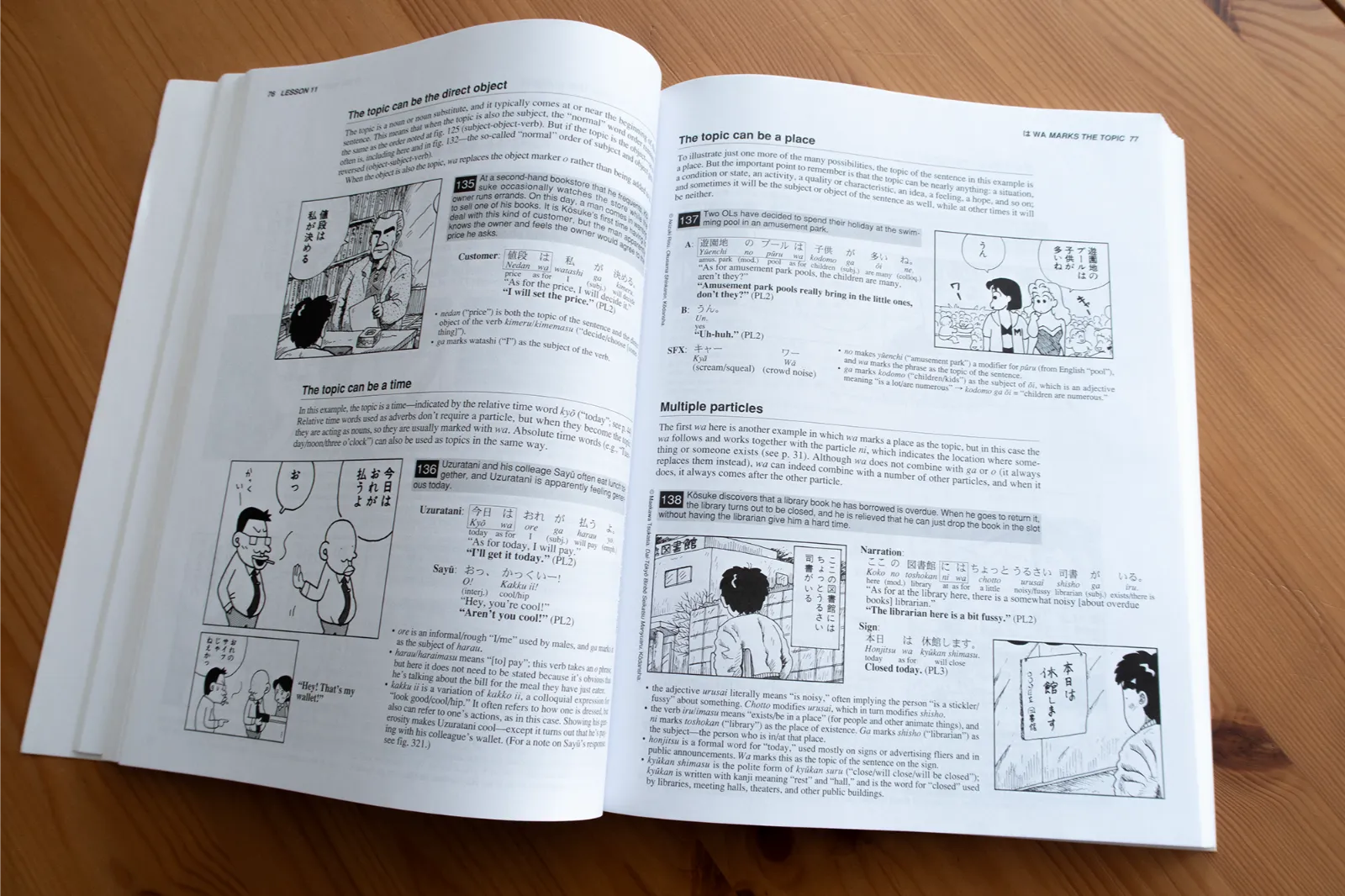
What does Japanese the Manga Way cover?
| Lessons | ||
|---|---|---|
| The Three Basic Sentence Types | Simple Questions with か ~ Ka | Negative Verbs |
| Sentence Particles | Doing Things with する Suru | Negative Adjectives & Desu |
| -です Desu and -ます -Masu | Modifying Verbs, Adjectives, & Desu | Let's Do It! |
| Modifying Nouns | Desire | If and When |
| Explanatory の No | が Ga Marks the Subject | を Wo Marks the Direct Object |
| More て -Te Form Expressions | は Wa Marks the Topic | Ko-so-a-do Words |
| Probably, Surely, Maybe | Some High-Traffic Particles | Connecting Words |
| Commands | Quoting with と To | Complete Sentence Modifiers |
| Can Do | Question Words | The Past Forms |
| Passive Verbs | The -て -Te Form | The Four Politeness Levels |
| Making It Happen | Basic Verb Facts | Sentence Structure |
| Giving and Receiving | Summary: Sentence Particles | Summary: Desu and -Masu |
| Appea.rances and Hearsay | Interjections | Summary: Simple Questions |
| Honorific Language | Existence | Relative Time Table |
| A Generic Counting Sequence | The Basic Numbers and Units | How Units Are Combined |
| Frequently Used Counters | Dates and Durations | Nouns |
| Personal Pronouns | Kinship Terms | Hours and Minutes |
Student Review

Japanese the Manga Way was the first Japanese textbook I picked up for myself outside of Minna no Nihongo, which I had to buy for university. I call it a 'textbook,' but it doesn’t really fit the usual mold. It doesn’t come with practice questions or answer keys, and if you have Genki 1 or Minna no Nihongo, it’s repeating a lot of the same material.
What The Manga Way really does is provide that little bit of extra interest for those that want to run before they can walk when learning a language, which is most of us. We all have that game we’d like to play in Japanese, or TV show we’d like to watch without subs, sometimes before we’ve even learned Hiragana! But the unfortunate reality is, many language learners quit before they get to these kinds of milestones. It’s a big commitment after all.
Japanese the Manga Way tames this overeagerness, by giving beginners as much as they could reasonably understand, while fulfilling some of the same aspirations. It doesn’t particularly matter whether you’re interested in manga or not. The strength here is knowing that you’re learning grammar points from real materials. It may only be one to four panels per grammar point, but there’s a feeling that you’ve actually understood something, that at least for me ticked some of those psychological boxes to keep me engaged.
Manga the Japanese Way is a good book for those that don’t really like textbooks, or perhaps are using them begrudgingly. In that sense it’s good for self-study, to push students forwards in a way that’s a bit less formal.
It’s also one of the rare textbooks that I’ve come across that does most of its teaching in English. It does use hiragana and some kanji, but goes a little more in depth into describing how certain grammar points work.
Another unexpected benefit of this book is that due to the source material it’s using, it goes more in detail on casual form than most other textbooks do. While this can come across as ruder if used in the wrong contexts, in a lot of examples these kinds of sentences are more akin to those learners would actually see in Japanese media.
Due to the increased use of casual forms, towards the beginning of the book there is a politeness key, detailing four levels of politeness which will be marked next to each example sentence throughout the rest of the book. These are:
- PL.1 – Rude / Condescending
- PL2 – Plain / Familiar
- PL3 – Ordinary Polite
- PL4 – Very Polite
This is a unique take that I hadn’t quite seen before.
Some of the simplified approaches the book makes are actually quite useful, such as detailing how sentences are structured and how that relates to English. Of course, in English, some of this can seem quite silly, but the way it’s used can help learners get to grips with these early issues.
As an example, Japanese the Manga Way provides all of the below for a single sentence:
- うち、この辺なんですか? – Japanese
- Uchi, kono hen na n desu ka? – Romaji
- Home, this vicinity is-(explain) (?) – Literal order
- Is your home around here? – Literal
- Do you live around here? – Intention / Translation
In using images, Japanese the Manga Way touches on the way that Japanese often omits the subject in sentences, which can be quite difficult from listening alone. In describing the actions that occurred before the panels used, students can learn that in casual Japanese, the language is rarely redundant. You can see in the example below, that the character simply says ‘おそい’, which could mean ‘is late’ or ‘is slow’, but the book translates this to ‘She’s late’ and details below the example exactly why it would be translated this way.
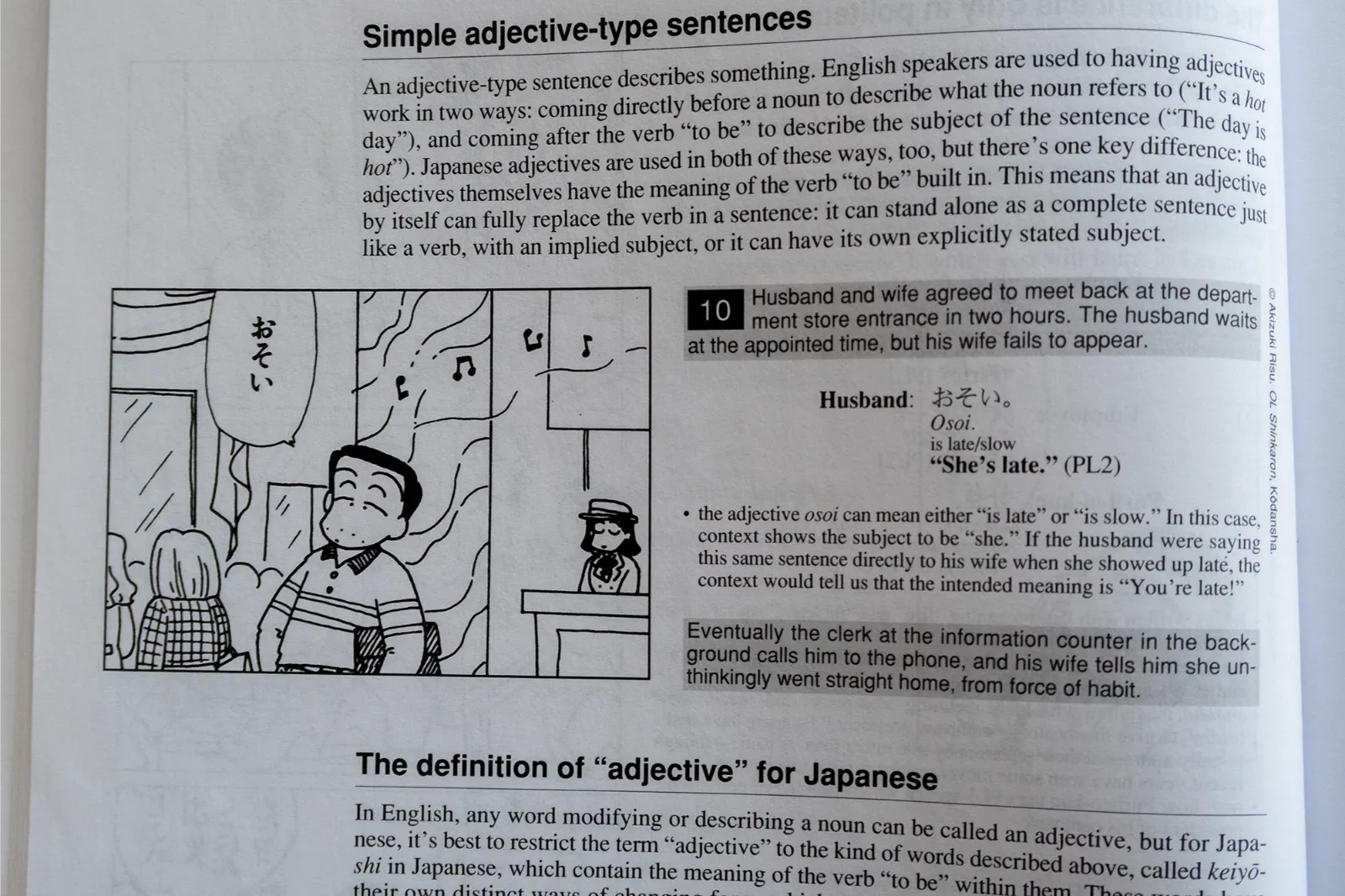
Teacher Review

Before using Japanese the Manga Way:
Honestly, this is one of the few Japanese textbooks we've reviewed on this website where you don't need to have read or prepared anything beforehand!
You could study hiragana beforehand, but it's by no means essential.
What to read next?
I think the dream of most Japanese learners would be that after finishing this book, you'll be ready to jump straight in to reading manga, but that's not really true. This book really works best alongside something like Genki 1 or Minna No Nihongo.
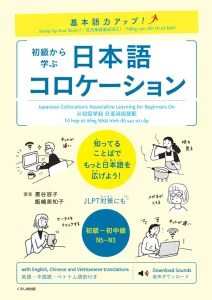
Bump Up Your Basics! Japanese Collocations
Learn practical Japanese collocations through 15 themed categories with examples, audio, and review practice.

Go Easy! Expand Your Japanese Vocabulary Through Conversation
Go Easy! Expand Your Japanese Vocabulary textbook review! Enhance your casual speech by learning Japanese idioms!
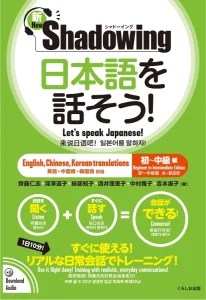
Shadowing: Let’s Speak Japanese! Beginner to Intermediate
Review of “New Shadowing: Let’s Speak Japanese!” N5–N2, audio shadowing drills and casual–polite dialogues to boost natural speech.

